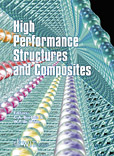Flax Fiber Reinforced Concrete- A Natura1 Fiber Biocomposite For Sustainable Building Materials
Price
Free (open access)
Transaction
Volume
59
Pages
15
Published
2002
Size
932 kb
Paper DOI
10.2495/HPS020201
Copyright
WIT Press
Author(s)
J. E. Femandez
Abstract
Fibers of many types, including some natural fibers, have been used widely for architectural applications in structural and non-structural assemblies. One important use of the mechanical properties of natural fibers is tensile reinforcing and volume filler within the matrix of a composite material; cementitious, polymeric, earthen or otherwise. While natural fibers offer a widely available and in expensive source of mechanically useful cellulose, the full extent of the potential for architectural applications has not been adequately investigated. This paper presents the laboratory results of an optimised flax fiber reinforced concrete (FFRC). The mechanical results are intended as a demonstration of the use of natural fiber reinforced concretes (NFRCs) for buildings in developing regions with access to significant sources of cellulose fibers and small-scale industrial capacity to process them. Generally, the inclusion of natural fibers within a concrete matrix is intended to augment the energy absorption of the cured concrete. Specifically, an optimal ratio mix and fiber length of flax fibers in concrete was sought in obtaining the highest possible ultimate strength, toughness and crack management from the various samples. Results from mechanical laboratory testing yielded positive conclusions regarding the increased strength and toughness of the natural fiber-reinforced concrete. While strength was shown to increase with the inclusion of particular fiber lengths and decrease with others, results from the optimised formulation indicated the potential to substantially increase the flexural toughness of the concrete composite. A theoretical analysis confirmed the empirical results of an optimum length of 3cm for flax fiber in concrete. As a result, an increase in the shear strength of structural members composed of the flax fiber reinforced concrete offers strategies that may lead to substantial savings in construction materials, especially steel. For architectural applications, the results indicate good potential for a class of concrete biocomposites for use in a variety of building types in developing regions.
Keywords





